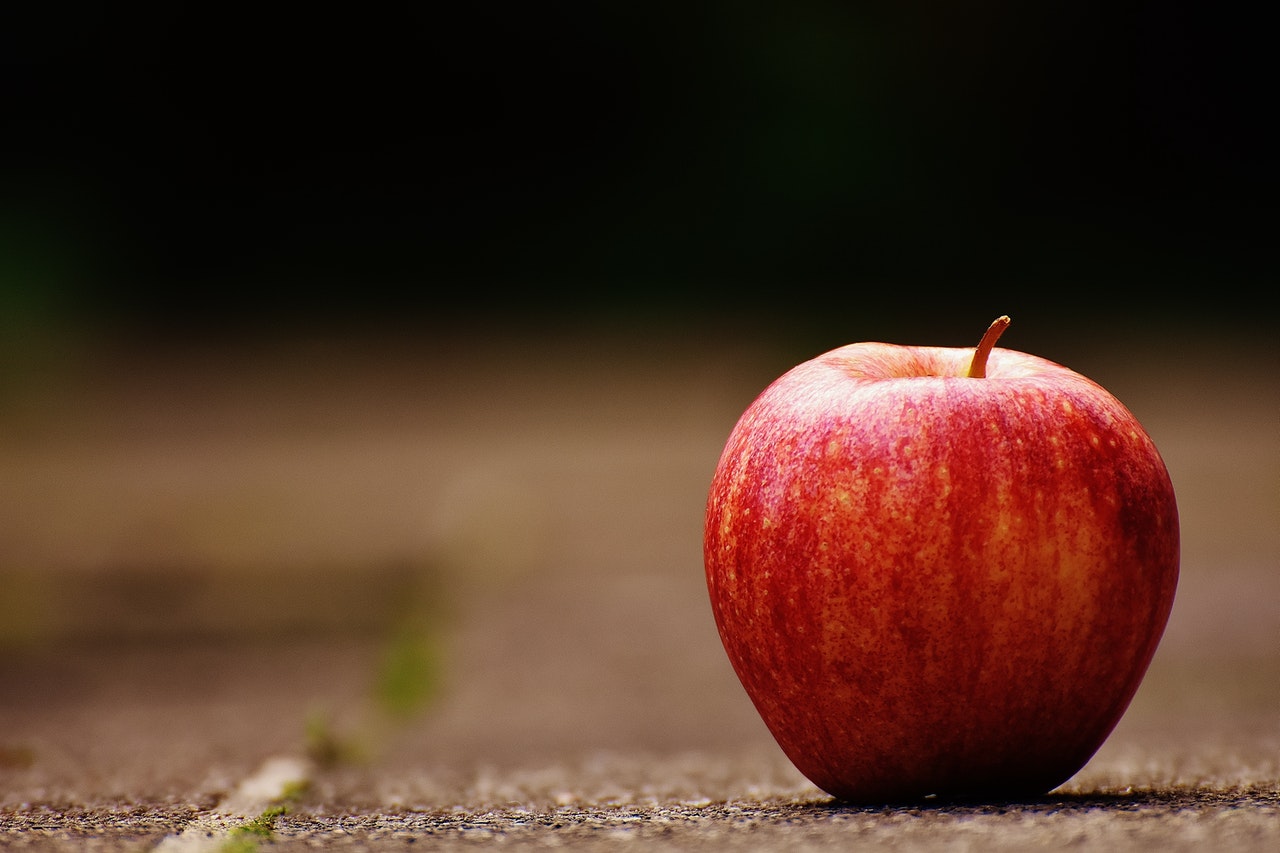Updated on 23nd June, 2022
Are you learning a new language but feel unsure how to learn vocabulary and retain it? Get the lowdown on how to memorize words and use them in conversation.
Here’s how to learn vocabulary more efficiently
In most grammar classes and textbooks, you learn words in groups. You might learn about animals on one day and fruits the next. This is comfortable, both for language teachers and students. Your teacher gets to have a clear lesson plan (today is about numbers), and you get to accomplish something (today, I learned the numbers!).
But is this the most efficient way of how to learn vocabulary?
If you look at the research on vocabulary acquisition, you’ll find a surprising result: weirdly enough, learning groups of similar words (apple, pear, banana) is significantly harder to learn. You’ll be much better off if you either learn words in unrelated groups (apple, dog, red) or in groups that form stories (apple, sweet, to eat).
Overcome interference
The research on the topic of how to learn vocabulary the right way revolves around the concept of interference. Here’s the idea:
Suppose you learn a bunch of fruit names: une pomme (apple), une poire (pear), une pêche (peach), etc. A few days later, you try to recall one of those words. Upon seeing a picture of an apple, your brain jumps into action, looking for your word through several possible routes. It’s a fruit! It’s a French word I learned a few days ago! It starts with a P!

Image by Pixabay from Pexels
And because you happened to learn three French fruits that start with the letter P (and all on the same day), you’re kind of screwed. Memories compete. When you try to recall your word, your three French fruits get into a kind of mental tug-of-war, while you try to figure out which one seems the most apple-like. As a result, you’ll have a harder time remembering pomme, and even if you do remember, you’ll take much longer to find it.
That’s not even the end of the story.
While you’re having this mental fight, you’ve probably just made the situation a little worse for next time. Every time you think of two things at once, they interconnect. So if you’re busy thinking about pommes, poires, and pêches, and you’re not particularly sure which one’s which, then you’re drawing those three fruits together into a jumbled group of “fairly confusing French fruits that start with the letter P.” You’ll be more likely to remember all three fruits the next time you try to retrieve the word for pear or peach.
Learn words at different times
I’ve run into this problem quite a bit on my own, especially in French, where I learned a lot of similar words at the same time. I still have problems remembering whether sept is 6 or 7, or whether jaune is yellow or green.
The defense against interference is to make similar words as different as possible. And since you can’t go into the French language and change pomme and poire so that they don’t start with the same letters, your only real ability to do this involves learning these words at different times.
The research behind how to learn vocabulary effectively
The concept of interference has been researched in a lot of different contexts, and I’ve linked five related studies at the end of this section if you’d like to read more.
One of the first studies (Waring 1997) gave test subjects a group of 3–6 words and their “translations” into a fake foreign language (apple = tisahl, pear = nugaw, etc.), and recorded how long it took each subject to memorize the translations. Half of the subjects got a group of closely related words (jacket, shirt, sweater), and half got unrelated words (frog, car, rain). The researchers would quiz subjects (what’s the word for jacket?) until they could remember every new translation within 3 seconds (“jacket” is…iddek!), and recorded the number of times they needed to repeat the tests until a subject successfully memorized a word.
These are their results:
Similar words took more than 35% longer to learn, at 11.3 repetitions for a group of similar words, compared to 7.2 repetitions for a group of unrelated words. This isn’t particularly efficient.
Still, time isn’t everything in the matter of how to learn vocabulary. What about retention? Once you memorize a group of similar or unrelated words, how well do they stick?
In a 2008 study, researchers tested these ideas in a school, teaching Turkish kids 40 unrelated English words (peg, key, rat, sun) and 40 related words (20 foods and 20 animals) in a classroom setting, and testing them afterwards on how well they could match English words and pictures. They tested them immediately after each lesson and again 1 week later.
In both cases, the kids had a harder time remembering similar words:
And they took longer to finish every similar-word quiz, taking an average of 5.8 minutes to finish, compared to 4.9 minutes for unrelated-word quizzes.
Recommended studies on vocabulary learning
If you’d like to read more on the topic of interference and vocabulary acquisition, check out these articles. Their introduction sections are often pretty readable:
- Effects on vocabulary acquisition of presenting new words in semantic sets versus semantically unrelated sets (2008)
- Vocabulary acquisition from extensive reading: A case study (2006)
- Semantic category effects in second language word learning (2003)
- The negative effects of learning words in semantic sets: A replication (1997)
- The effects of semantic and thematic clustering on the learning of second language vocabulary (1997)
More proven ways to learn vocabulary and remember it
When you go by the numbers, learning similar words at the same time is a fairly crappy idea, even if it feels a bit more comfortable. So what are the alternatives?
Study randomly ordered words in your target language
In most studies of how we learn vocabulary, the alternative to word groups involved learning a jumble of totally unrelated words, and that worked quite well.
You’ve probably already come across my Base Vocabulary List for Any Language, which is currently arranged in typical word groups (animals, professions, etc.). Based on the research, I started playing around with the idea of an alphabetical list. Normally, an alphabetical list would solve the similar word problem at the expense of adding a new problem: the words would all sound similar. But if you start with an alphabetical list in English and then translate it into your target language, you basically create a randomly ordered list anyways. So I put my English word list in alphabetical order, translated it into Hungarian, and learned that list.
In practice, I found that memorizing words was much easier. I stopped getting my greens confused with my yellows (although I still get six confused with seven; I didn’t follow my own advice when it came to numbers, and Hungarian’s six and seven – hat and hét – are extremely similar looking).
Alphabetical lists are also a lot easier to use; I could just skim through my Lonely Planet Phrasebook, circle my A-words, then circle my B-words, and after 30 minutes, I had good translations for every word in my list. So in the near future (probably next week), I’ll release a new version of that list (with an extra couple hundred words) in alphabetical order, so that it’s easier to use and easier to memorize.
But alphabetical and random orders aren’t the only options for how to learn vocabulary.
Group thematically related vocabulary to form stories
In one of the earliest studies focusing on how to learn vocabulary, researchers tried out groups of words that shared the same theme. These are words that tell a story – sweater, changing room, try on, cash register, wool, navy blue, striped – rather than words that fit in the same category, like sweater, “shirt,” “jacket,” and “coat.” They’re related words, rather than similar words, and there’s a huge difference between them.
When it came to finding ways of how to learn vocabulary in the most effective way, focusing on related words – words that form stories – worked even better than totally random words, although the effect was relatively mild. Subjects needed ~10% fewer repetitions to learn a group of words like “frog,” “hop,” “slimy,” “pond,” “croak,” and “green,” compared with “cloud,” “erase,” “social,” “office,” “lose,” and “risky”:
An idea would be to create a frequency list that’s arranged in little story-like clusters. That’d be pretty neat to have, although it would need to be professionally translated first, since it’s kind of a pain in the butt to translate a list that isn’t in alphabetical order.
Chain words together to make them easier to learn
There’s also a way you can give yourself that 10% boost in memorization speed: by learning chains of words through Google Images.
I’ve talked about learning vocabulary through Google Images a few times so far. The basic idea is that you search for a word like dernier (last) and get results like these:
Then, you use the French sentence and the picture to learn your word.
Dernier is the word that fits into “Anthony Reveillère a célébré son 400e et probablement __ match.”
But suppose you didn’t know the word célébré or probablement. You could use this sentence to learn those words, too. Or you could look up a new story for one of those words, creating a chain of connected stories:
You might then learn saison or neuvième, either by reusing this story or by adding yet another new story to your chain. And that’s how you learn vocabulary by building on other vocabulary you’ve already come across and internalized.
Context is key to memorizing vocab successfully
Through this process, you can learn a long string of related words in the context of interconnected stories. They’ll be faster to memorize and easier to retain than totally unrelated words, and they’ll be much better than a list of similar words like “apple,” “pear,” and “apricot.”
I like to use a frequency list to guide my general vocabulary studies. Then, whenever I encounter a particularly interesting word, I’ll create a little chain of words and stories. In the process, I learn a lot more vocabulary, get a lot more exposure to a bunch of sentences, and have an easier time remembering all of it.
Make mnemonics work for you
When researching how to learn vocabulary with minimal word loss in the process, mnemonic techniques are bound to come up.
Mnemonics are so-called mental shortcuts that help you condense language data into smaller, more digestible chunks you can process more easily. They also turn abstract information into concrete pictures, making full use of spatial memory to help you retain and recall words efficiently.
For more details about the mechanics at work with language mnemonics, check out my article on how to memorize vocabulary.
Flick through those trusty flashcards
Making flashcards and regularly reviewing them is a truly effective way to get you to learn vocabulary like a pro.
If you want to save yourself ~30–60 minutes of time making your first Anki flashcards, the Fluent Forever shop has a number of resources you can use to speed up the process. There are also other ready-to-use Anki flashcards in various languages that you can check out.
For the ultimate flashcard experience, remember that there’s a much faster way. Simply download the Fluent Forever mobile app and let those automated flashcards appear at the right time so you don’t risk forgetting them. That brings us to our next tip.
Repeat, and then some more
Enter the Spaced Repetition (SRS) phenomenon. In a nutshell, this is a flashcard-based system by which you revisit those words you’re learning at custom intervals to help test your ability to recall them.
With the Fluent Forever app, you don’t have to plan how to learn new vocabulary or manually set the review frequency. SRS is built into the software so that everything is readily organized for you to revisit specific words exactly when you’re meant to, making them stick.
Intrigued by how we’ve integrated spaced repetition into our app? Check out this post to know more about Fluent Forever’s touch of SRS magic.
Ready, steady, play vocabulary games
Having fun is an important factor in how to learn vocabulary for good. Plus, seriously, who doesn’t like playing games?
There are vocab games to suit all language levels and player interests, as you’ll gather from our top language learning game recommendations. So get playing, have a blast, and learn some new words!
Tip: Check out our top game recommendations to help you learn any language fast.
Say no to translation, yes to immersion
Skipping translations and using flashcards, together with regular practice with native speakers of your new language, are proven ways to help you achieve fluency fast. Relying on direct translations when learning a new language has been proven to slow down your progress, as you may struggle to retain essential vocabulary.
Going translation free, on the other hand, will help you think in your new language – as it’s the only way you’re able to communicate. Create an immersive environment for yourself, pair up with a language practice partner, and work with a private language coach to accelerate your journey to fluency. And most importantly, don’t be afraid to slip and make mistakes – it’s how you learn!
Our article with the top tips on the fastest way to learn a language has got everything you need to pick up speed – whether it’s how to learn vocabulary or how to master other aspects of the language. Check it out!
And last but not least…
Download the all-in-one language learning app
You’re probably wondering, if only there was a way to incorporate each of the above tips. If you are, the Fluent Forever app is what you’re looking for!
Using high-frequency words to compose flashcards and meaningful story-forming sentences, and presenting you that information at regular intervals through a spaced repetition system algorithm, the app effectively provides you with an easy, optimized, and translation-free method to build and retain your vocabulary bank in your target language. Combining each of the essential “how to learn vocabulary” elements, the review sessions in the app let you learn the language in a fun and engaging way – via a flashcard game of sorts, if you like.
Essentially, our app automates all the preparatory and behind-the-scenes work so you can focus on the important bit: making time to build a habit and achieving real progress in your journey to fluency.
Ready to get started on learning some new vocabulary? Download the app and choose your target language right now!









